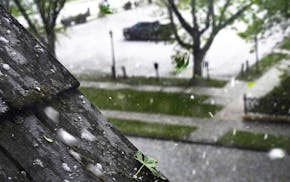Wal-Mart Stores Inc. is turning up the pressure to keep its shelves adequately stocked by proposing to tie executive compensation to the issue — and has asked an outside auditor to alert workers which items to focus on by plastering U.S. stores with neon green dots.
Earlier this year, Wal-Mart made news over item shortages as it cut back on workers, driving away some frustrated shoppers. In April, Acosta Inc., a consulting firm, began the green-dot program in Wal-Mart's U.S. stores after previous shelf audits.
The effort Wal-Mart is expending to fix its stocking issues is notable for a chain that became the world's largest retailer in part by gaining mastery over its supply chain and logistics.
"It's like Tiffany's falling down on quality," said Wallace Hopp, associate dean of faculty and research at the Stephen M. Ross School of Business at the University of Michigan. "It's the core of their essence. If you can't manage inventory in retail, then you can't manage retail."
The compensation proposal was submitted by Wal-Mart to shareholders in April, not to be voted on until the company's annual meeting June 7. On-shelf availability — known as OSA — would be one of several new metrics by which managers and executives could be judged.
While Wal-Mart regularly cites OSA figures to investors, the company has declined to say how it has calculated those rates in the past — although Acosta figures are at least part of them — or how it would do so in the future. The Acosta audits focus on about 700 important items, which makes it easier to achieve a higher percentage of in-stock merchandise than if the whole store were counted. Wal-Mart supercenters carry about 142,000 items, according to the company's website, so a typical Acosta audit represents about one half of 1 percent of a store.
Carol Schumacher, a Wal-Mart vice president of investor relations, said in an analysts' call last week that on-shelf availability in the first quarter was in the 93 percent to 95 percent range.
"Management is focused on OSA to drive sales," she said.
It's not clear how Wal-Mart derived that figure — and that is where the story of the green dots comes in.
Turning to consultant
Wal-Mart audited its on-shelf availability in-house for years, said David Tovar, a company spokesman. In 2011, it hired Acosta to do the job.
Keeping shelves stocked can boost sales significantly, according to Acosta, whose clients have included Target Corp., Whole Foods Market Inc. and ConAgra Foods Inc.
"In a superstore, if we fix a void at the beginning of the month, one single SKU [stock keeping unit] in oral care translates to about $360,000 in sales at the end of the month," Erick Kritsky, Acosta's director of application development, said in a 2012 study. He didn't specify a particular item.
When Acosta began its Wal-Mart audits in 2011, it conducted them secretly, not telling store managers which items were being monitored or when. Each week, Acosta field auditors searched for a random list of 300 items out of 700 being monitored, according to a copy of Acosta's rules. They compiled data collected from most of the more than 4,000 Wal-Mart Stores in the United States.
Acosta was so committed to secrecy that when some Wal-Mart managers tried to influence the results by finding out what items were being monitored, Acosta managers told their employees to rebuff them and report such incidents, according to internal e-mails.
Rebound cited
Wal-Mart seemed pleased with the audits. On a February 2012 earnings call, Bill Simon, chief executive officer of Wal-Mart's U.S. operations, told investors that the use of weekly third-party audits allowed executives to "see what customers see in their store."
He said the company had "made great progress throughout the year" in improving on-shelf availability and was achieving rates in the mid-90 percent range.
After a while, the Acosta audits stopped. Then, earlier this year after media reports about empty shelves, Wal-Mart asked Acosta to start monitoring the shelves again.
Tovar said the most recent round of auditing was "the first time the green dots were in place."
He added: "The reason we went to the green sticker process is because we think this is going to help the store associates do a better job of being in stock in key items."

Tesla recalling more than 3,000 of its 2024 Cybertrucks due to faulty pedal
EPA designates 2 forever chemicals as hazardous substances, eligible for Superfund cleanup
Israel's long-term credit rating is downgraded by S&P, 2nd major US agency to do so, citing conflict
Olympic organizers unveil strategy for using artificial intelligence in sports

